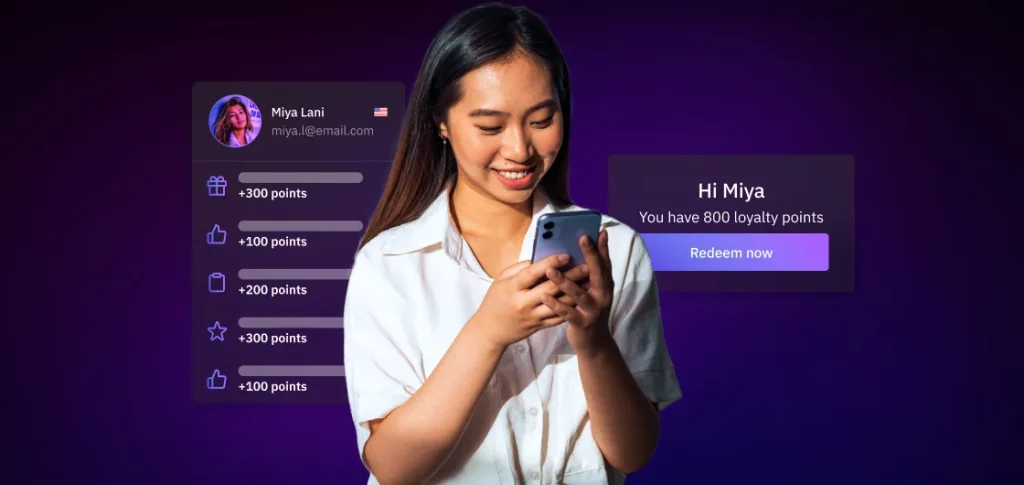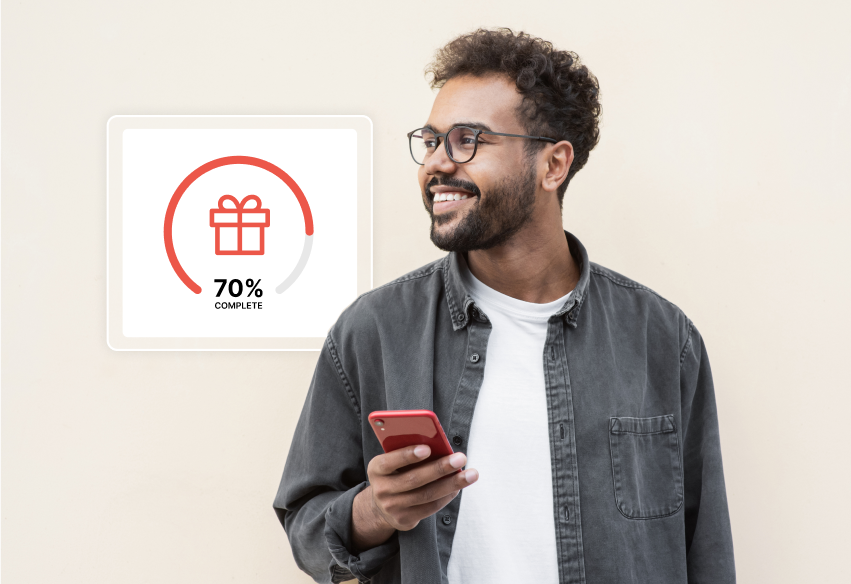The online B2B market is enormous and equally as competitive. It’s no secret that customer retention is paramount and should be at the top of your list when it comes to your sales and marketing strategy. This is why for this week’s feature deep dive, we look at B2B loyalty programs and how they can be used effectively to keep your current customers and even attract more.
We look at the differences between B2C and B2B loyalty programs, and suggest a handful of ideas you can use to make a loyalty program work for your B2B business, and even some examples of well-executed B2B loyalty programs.

The difference between B2C and B2B loyalty programs
Customer bases and purchase behaviours are quite difference between B2C and B2B markets and so we can’t expect the same loyalty program mechanics to work as effectively for both. Below are some key distinctions between the two types of loyalty program and worth considering when designing a loyalty program for your B2B customers.
Type of loyalty program
In B2C loyalty programs, earning and redeeming points is a common strategy. This approach works well for customers who make smaller, frequent purchases. However, this model doesn’t translate as effectively to B2B settings. B2B purchases are often larger and involve long-term commitments or subscriptions. Because of this, it’s more effective to design a reward system around tiers or perks. This way, customers receive meaningful benefits that reflect their significant investment and ongoing relationship with the business.
Signing up & membership
B2C loyalty programs are simple enough to join, often at no cost, and you’ll usually receive instant rewards just for signing up. This makes it a no-brainer for consumers to participate. On the flip side, B2B loyalty programs usually require a bit more commitment; customers often need to sign a contract or make a purchase to join. B2B programs are especially effective when paired with a subscription-based model, but they need to offer substantial benefits to make it worthwhile for businesses. The key difference lies in the level of commitment and the type of rewards that are tailored to fit the business model.
Rewards & incentives
When it comes to incentives, B2C reward systems typically offer things like discounts, point multiplier campaigns, and early access to sales. By contrast, B2B loyalty programs tend to focus on rewards that enhance the customer’s business or offer unique experiences. This might include business consultancy services, exclusive event tickets, or even entries into prize draws. The idea is to provide rewards that add real value to the customer’s business operations or offer memorable experiences that go beyond your typical discounts.
Offers & deals
B2B companies usually deal with a longer and more thorough decision-making process, so using FOMO tactics, like limited-time holiday offers, to attract new members doesn’t really align. Instead, loyalty offers should focus on highlighting the long-term benefits that customers will receive as part of their loyalty program. Emphasising ongoing value and perks is more effective for enticing businesses to join and stay committed.
Difference in data collection
B2C companies use loyalty programs to register customers and collect their contact information at the same time. This isn’t necessary for B2B companies as they usually already have their customers’ contact details. Instead, they can use incentivised surveys to gather valuable feedback from their customer base. This approach helps B2B businesses understand their customers’ needs better and improve their services based on direct input.
Program personalisation
For B2C programs, personalisation usually means sending more relevant emails and managing offers that differ at a customer segment level. Given that B2B companies often have a smaller, more valuable, and more demanding customer base, they need to go a step further. A good idea is to offer rewards like training sessions that are custom-fit to each customer’s specific needs. Personalised rewards help B2B companies meet their customers’ unique requirements and build stronger relationships.
Loyalty metrics
Loyalty programs can drive brand loyalty in ways other than just transactions. B2C companies can use these programs to reintroduce old products, encourage sharing products on social media, or increase engagement with their app. B2B companies can leverage these programs to incentivise brand advocacy among partners or provide education to boost upselling opportunities. The different approach for B2B businesses centres around building strong and close relationships with their customers and enhance their overall brand image.

How you can use a loyalty program for your B2B business
When implementing a loyalty program for your B2B business, consider the following ideas and whether they would work for you and your customer base.
Perks
A loyalty program based around perks typically means there may be no points systems, tiers, or progression incentives. Instead, members might get all the benefits as soon as they register. You can use the perks approach to create a VIP club for your customers. Even without points or tiers, companies can engage members through surveys or prize draws. If clients stop being partners or don’t make a purchase within a certain timeframe, they may lose access to those benefits. This approach can create a sense of exclusivity and immediate value for B2B clients.
Tiers
Tiered progression in a loyalty program usually relies on total or regular spend or points earned. However, a third, less common approach is progression by invitation. So as a B2B company, this means that you control your customer’s progression, by placing them into a tier based on the volume of their business with you. Naturally, higher tier levels come with better rewards, and clients have the flexibility to downgrade or upgrade with their next order. This method allows B2B businesses to reward clients appropriately from the start, based on the scale of their engagement, while still providing room for adjustment.
Rewards: experiential
Experiential rewards can range from holding member-only events to giving out free movie passes for your customer’s employees. These rewards don’t have to be expensive; they just need to be creative enough to excite your customers. When you offer experiences that make your customer’s employees happy, it boosts overall satisfaction and strengthens your customer’s loyalty to your business.
Rewards: co-operative
Educating and training partners and suppliers can be a highly effective loyalty incentive. After all, it’s in your best interest to help them perform better, as this strengthens your business relationship. Additionally, if you assist a smaller, less experienced client by sharing marketing, sales, or other expertise, they’ll attribute part of their success to your support. This not only builds loyalty but also enhances your reputation as a valuable and supportive partner.
Rewards: partner swag
Branded merchandise and gifts can be great rewards for B2B loyalty programs. They’re great because they’re perfect as a ‘free bonus’ with customer orders and can be distributed among their staff to boost morale. Plus, if you already have a strong partnership, you can often acquire these rewards at a very low cost. This approach not only enhances client satisfaction but also reinforces your brand presence within their organisation.
Referral program
Word-of-mouth marketing is just as crucial in B2B as it is in B2C, if not more so. Reward customers who share your name and recommend your loyalty program to others. Since membership involves direct business transactions, one referred client can potentially translate into significant additional revenue. Encouraging your existing clients to spread the word not only helps grow your customer base but also builds trust and credibility in your brand.
Gamified surveys
There are several ways to subtly incorporate customer profiling into your reward system. For instance, some rewards can stay hidden until the customer completes a brief survey. Alternatively, clients may earn extra entries into a prize draw, for example, by providing additional information. This gamified profiling approach is a valuable tool for collecting feedback and gathering data, which can enhance your personalisation strategy. It not only makes data collection fun but also ensures you gain deeper insights into your customers’ preferences and needs.

B2B loyalty program examples
Below are some case examples of successful B2B loyalty programs

IBM VIP Rewards
IBM uses gamification to encourage their members to learn more about IBM’s services and reward customers for completing beneficial tasks. They offer points to members in return for doing ‘challenges’ like reviewing products, writing blog posts, completing learning modules and more. Points can be redeemed for gift cards and private sessions with IBM experts. Progress is posted to a leaderboard visible to all members to encourage competition.

MailChimp & Co
MailChimp developed a simple perk scheme to encourage marketers to use their platform to grow their clients’ businesses. By joining the program, members were given perks such as tools to help them with their clients, additional training resources, access to exclusive events and opportunities to earn commission.

Hubspot for Startups
A good example of a loyalty program not based around points and prizes is Hubspot’s startup support program. They partner with incubators, VC firms and entrepreneurial organisations and provide them with exclusive resources, software, expert training and discounted pricing to pass on to the startups they support. Based on the number of startups you onboard with Hubspot each year, you can get access to more premium perks.
What works for your customer?
Implementing a well-structured B2B loyalty program can transform your business relationships, driving customer retention and long-term growth. By incorporating a variety of reward strategies, you can create a comprehensive and engaging loyalty program. Each approach offers unique benefits tailored to the specific needs and behaviours of B2B clients, from enhancing their business operations to providing valuable experiences and fostering deeper connections.
Consider your customer base and what adds the most value to them when building your program. By leveraging the strategies that work for you, your B2B loyalty program can not only boost client satisfaction and loyalty but also position your business as a trusted and valuable partner in their success.

BY DAN WATSON
Account Manager at Tin Soldier
Dan has worked in digital for over a decade after cutting his teeth in the advertising industry. He enjoys working closely with his clients to present creative solutions to their business challenges. Dan is particularly passionate about content, CRO strategy and marketing automation.
